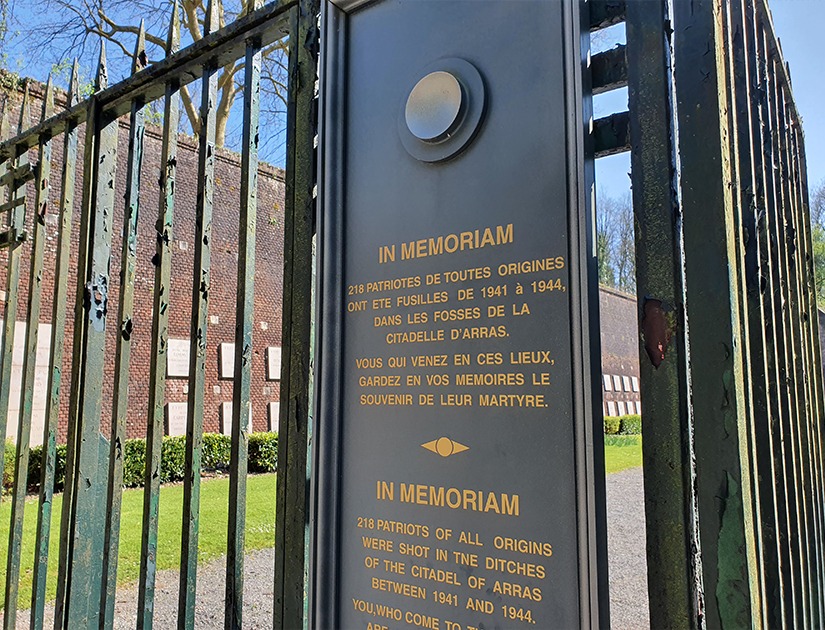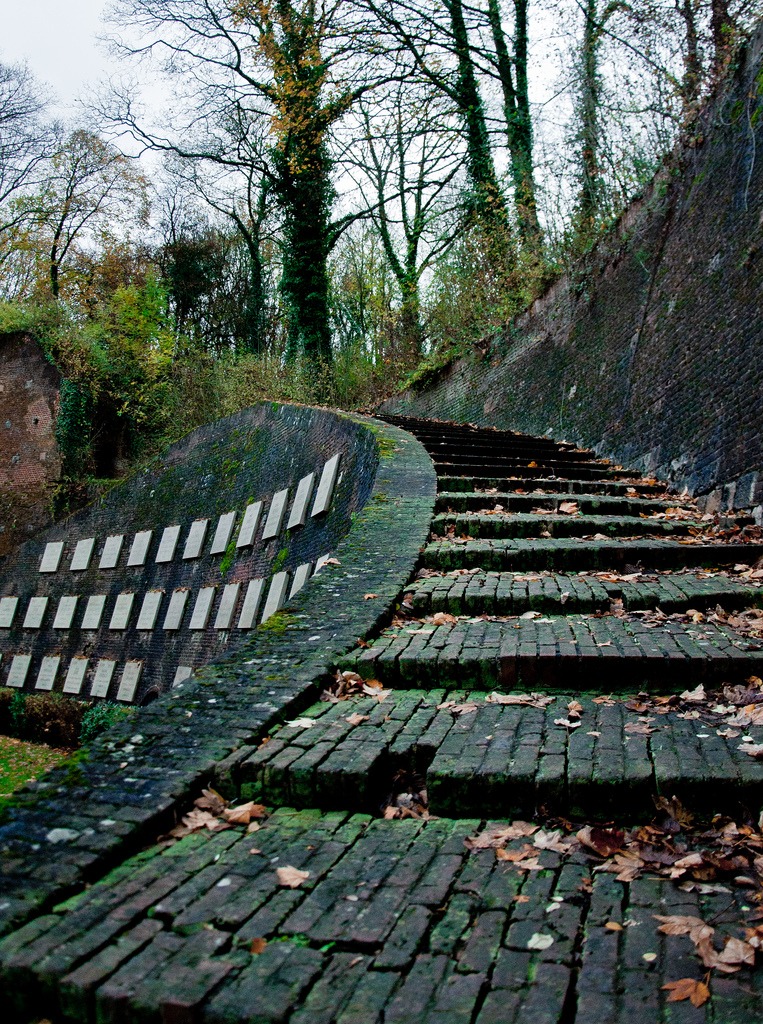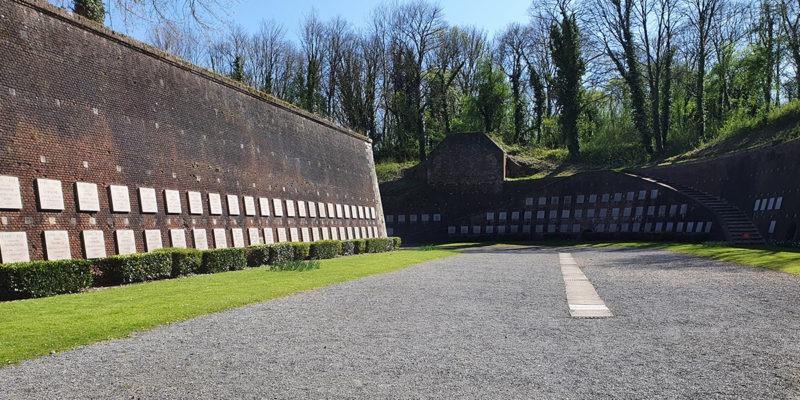In the ditches of the Arras Citadel, a poignant memorial recalls the tragic story of 218 patriots who were shot by German forces during the Second World War. Dedicated to the victims of different nationalities in the years following the Battle of Arras, the Arras Wall of Shootings Memorial is a place well worth visiting to understand and remember the barbarity of this dark period in history.
A preserved place of memory
The memorial is located at the Arras Citadel, where patriots were executed between August 21, 1941 and July 21, 1944. The memorial’s layout is deliberately sober, to preserve the authenticity of the site and show visitors the setting that witnessed these tragic events. The only monument in the memorial is a post, as exact a replica as possible of the one to which the victims were tied. In addition, 218 plaques along the walls of the citadel recall the name of each victim, and a plaque at the entrance to the memorial invites visitors to remember the sacrifice of these patriots.

Memory plate at entrance
Resistance victims from all walks of life
Expression of resistance in Arras
From the summer of 1940 onwards, individual sabotage operations multiplied. Blanche Paugan, who repeatedly cut telephone wires, was the first Resistance fighter to be apprehended and sentenced to death by the Nazi court in Arras on September 17, 1940. Her sentence was eventually commuted to hard labor for life. Between 1941 and 1942, isolated acts gradually gave way to more structured resistance networks. The offensive against the USSR on June 22, 1941 marked the beginning of the rise of Communist resistance. On July 21, two Communists, Marcel Dandre and Albert Bekaert, orchestrated the first sabotage action on the Arras-Lens railroad line. Dandre was killed in the explosion, while Albert Bekaert was captured, tortured, tried and finally executed. He was the first person to be shot since the beginning of the Occupation at the Saint-Nicaise prison in Arras. The Germans also used deportation as an instrument of repression. More than 7,000 people from Nord-Pas-de-Calais were transferred to Reich prisons and camps. Among them, 80 people from Arras lost their lives.
Memorial inauguration and commemoration
Inaugurated on July 13, 1947 by the then President of the French Republic, Vincent Auriol, the memorial was honored with a poignant speech by Guy Mollet, deputy mayor of Arras. In his speech, he stressed the importance of perpetuating the memory of these victims and their struggle for freedom, so that future generations will not forget the sacrifices they made. Since its inauguration, the memorial has frequently been the venue for commemorative ceremonies in honor of these resistance fighters. In 2005, a 218th plaque dedicated to Jules Douvrin was added to the memorial and unveiled by Prefect Denis Prieur at a solemn ceremony. In addition, commemorative events paying tribute to the Resistance are regularly organized around the date of May 8, 1945, marking the end of the Second World War in Europe and the Allied victory over the Nazi regime. These commemorations serve as a reminder of the commitment and courage of those who fought for freedom and democracy.

View of the wall of those shot in Arras
An Earth Removal Ceremony in 1951
During a poignant ceremony in October 1951, soil impregnated with the sacrifice of the heroes of the Resistance was removed. Fernand Derome, member of Guy Mollet’s cabinet, former vice-president of the council and mayor of Arras, attended this solemn event at the spot where 220 Resistance fighters were shot so that France could continue to live. It was Mr. Vélu, a civil engineer and representative of the OCM group, who himself removed the earth marked by the blood of heroes. He then placed it in an urn to be taken to Châteaubriand. Eminent personalities were present at the ceremony, including Colonel Roger Troy, Lieutenant Morival and members of the Arras Liberation Committee. Mr. Besnier, secretary of the liberation committee and detained by the Germans, had the privilege of sealing this precious Artois soil. Other participants included MM. Leclercq, mayor and deputy mayor of Aubigny, Lepoivre, mayor of Courrières, and Vandeville, mayor of Oignies, who carried the sacred soil of their town, where many heroes fell in battle against the invaders.
Geographical location of the Arras memorial site
The Mur des fusillés is close to the Citadelle (near the old gate), the Jardin du Polygone and another place of remembrance, the Faubourg d’Amiens Military Cemetery :
The site remains open to the public every afternoon from 2pm to 7pm.
R.C.
